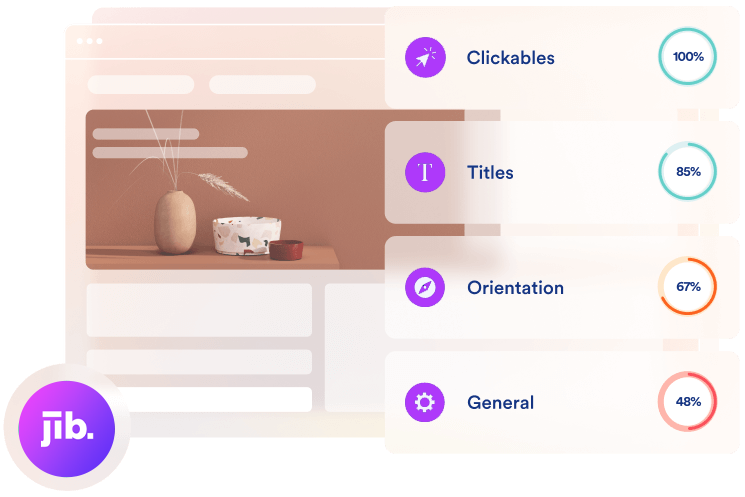The accessibility widget was developed in close collaboration with people with disabilities and continues to be developed in this way to ensure that it meets their various needs and requirements. Through analyzing their experiences of surfing the web and understanding their difficulties, we have designed and developed all of the widget’s features. This includes the technological and conceptual lines that underpin its activities.
The accessibility widget’s interface enables people with the following disabilities to browse and interact with websites in a way that suits them best:
- Epilepsy
- Visual impairments (including the elderly)
- Cognitive and learning disabilities
- ADHD
- Blindness
- Motor impairments
For each type of disability, the widget offers a unique set of tools that users can modify to meet their needs. The interface also provides bundled accessibility combinations known as Accessibility Profiles, which users can activate to simultaneously enable various features.
Website optimization for screen readers used by blind users
One of the significant issues for blind users is website optimization for screen readers. Most websites are inaccessible to blind individuals because they have not been formatted for use with screen readers. However, the accessibility widget solves this problem by utilizing a combination of machine learning AI processes, IRIS, and OCR technologies to add the necessary ARIA attributes and ALT text to websites. This allows users to browse sites easily and accurately, and the process has been designed and tested with blind individuals to ensure functionality across all aspects of a website.
Keyboard Navigation for users with motor impairments
For users with motor impairments, the accessibility widget overcomes the barrier of making a website navigable by keyboard with the use of a Contextual Understanding AI that automatically adjusts the website at the code level. This enables users to browse the entirety of a site using only their keyboard.
Design adjustments for the visually impaired
People with visual impairments may have trouble seeing content on a website clearly, but the accessibility interface allows them to modify the content to suit their specific disability. They can make adjustments to the sizing, colors, contrasts, saturation, fonts, and more.
Seizure safe for epileptic users
People with photo-sensitive epilepsy are at risk of experiencing seizures triggered by flashing images or popups that may appear on websites. However, the accessibility widget offers a “seizure-safe” feature that allows epileptic users to stop all flashing animations or GIFs and reduce dangerous color combinations. This ensures that people with epilepsy can browse websites safely without the risk of experiencing seizures.
Comprehension adjustments for users with cognitive disorders
People with cognitive disorders, such as autism and dyslexia, may find it challenging to comprehend websites and struggle to understand the content, products, or offers presented. However, the accessibility widget offers a range of features that can help. It includes an online quick-access dictionary, which allows users to identify unfamiliar words, abbreviations, and phrasing that they may not understand. The widget also includes focus and orientation adjustments that enable users to navigate websites more easily, ensuring that they can access the information they need in a way that suits their individual requirements.

